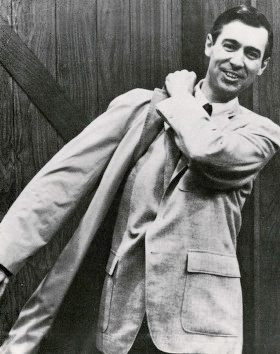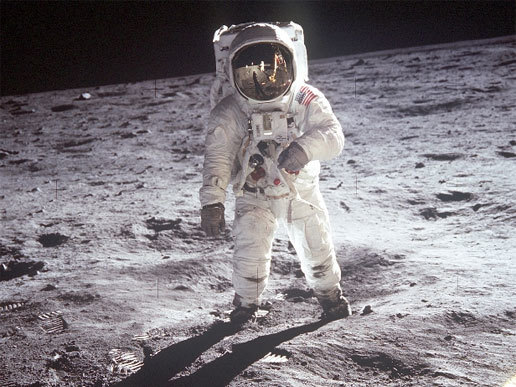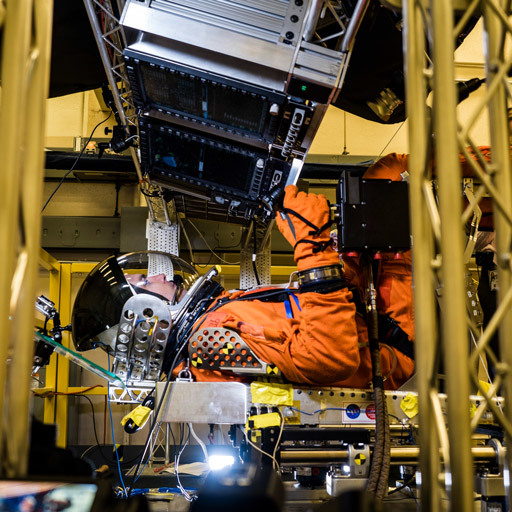Ripley Entertainment Inc.'s Blog, page 260
July 26, 2019
CARTOON 07-26-2019
July 25, 2019
The Truth About What Was (Or Wasn’t) Under Mr. Rogers’ Sweaters
Featured in Ripley's Believe It or Not!

Rumors have been circulating for years that Fred Rogers served in the military and that he got some ink to commemorate his war record. Despite the rumors, Rogers was never a sniper, Navy Seal, Green Beret, or Marine Corps drill instructor. He didn’t serve in the military at all.
Beloved TV children’s host Mr. Rogers did not have an armful of tattoos that he hid under colorful cardigans. He opted for sweaters so he’d have a comfortable appearance while interacting with children. His fashion was also heavily influenced by his mother.

Rogers was born in 1928 in Latrobe, Pennsylvania. He was too young to enlist in World War II and too old for Vietnam. It was plausible for him to serve in the Korean War, but he didn’t. Instead, he launched a TV career in 1951 at the age of 23.
When working on The Children’s Corner for a public education television station in Pittsburgh, Rogers realized that his squeaky dress shoes were too noisy when he worked alongside puppets. He changed his footwear and opted for some less-formal clothing to match. After all, a suit with running shoes isn’t very stylish.
The show eventually evolved into Mister Rogers’ Neighborhood, which aired from 1968 to 2001. The TV personality filmed a total of 895 episodes. Each episode started the same way—Rogers came home and sang “Won’t You Be My Neighbor?” and then changed into sneakers and a zippered cardigan.

Via the Smithsonian Institute
Rogers’ mother Nancy knitted every single one of the sweaters the entertainer wore on the program. His wardrobe is so iconic, that one of his red cardigans belongs to the Smithsonian Museum in Washington, D.C. Unfortunately, it’s not currently on display, a fact that disappoints many fans. One person wrote on the museum’s webpage, “I would travel the world to see that sweater,” proving that Rogers impact on people’s lives is undeniable. The good news is that one of his gold sweaters and a pair of his sneakers are available for all to see at the Children’s Museum of Pittsburgh.
Rogers was a good son who listened to his mother, who was more than just an accomplished knitter. He once said of her advice: “When I was a boy and I would see scary things in the news, my mother would say to me, ‘Look for the helpers. You will always find people who are helping.’”
Rogers died on Feb. 27, 2003, at the age of 74 after suffering from stomach cancer. He lived a very authentic life and taught others to follow suit. “There are three ways to ultimate success,” Rogers is quoted as saying. “The first way is to be kind. The second way is to be kind. The third way is to be kind.”
By Noelle Talmon, contributor for Ripleys.com
Source: The Truth About What Was (Or Wasn’t) Under Mr. Rogers’ Sweaters
CARTOON 07-25-2019
July 24, 2019
CARTOON 07-24-2019
July 23, 2019
Behind The Insanity Of Japanese Game Shows – Ripley’s Believe It or Notcast Episode 007
Featured in Ripley's Believe It or Not!

Many have heard that Japanese game shows can be ruthless environments where anything goes.
This week, Brent and Ryan talk to American contestants and game show experts to separate the facts from the fiction.




The Living Statue: Hananuma Masakichi

For more weird news and strange stories, visit our homepage, and be sure to rate and share this episode of the Notcast!
Source: Behind The Insanity Of Japanese Game Shows – Ripley’s Believe It or Notcast Episode 007
CARTOON 07-23-2019
July 22, 2019
Bruce Campbell Hosts The Ripley’s Believe It or Not! Panel At San Diego Comic-Con
Featured in Ripley's Believe It or Not!

Host Bruce Campbell introduces fans to the extraordinary, the death-defying, and the unusual people featured in Ripley’s Believe It or Not!
Guests:
“Cyborg” Angel Giuffria (Hunger Games) lives life with one of the most advanced prosthetic arms on the market.
John “Hammerhead” Ferraro boasts a skull more than two times thicker than average, using it to shock sideshow audiences.
“Half-man” Short E. Dangerously doesn’t let proportions stop him from challenging physics to perform incredible stunts.
Ripleys.com editor Sabrina Sieck (producer Ripley’s Believe It or Not!) also joins to dive down the rabbit hole of Ripley history.
Bruce and the cast also participated in a Q&A session.
Source: Bruce Campbell Hosts The Ripley’s Believe It or Not! Panel At San Diego Comic-Con
CARTOON 07-22-2019
July 21, 2019
CARTOON 07-21-2019
July 20, 2019
Home Of The Apollo Missions: 5 BIONS About NASA’s KSC
Featured in Ripley's Believe It or Not!

At 10:56 pm on July 20th, 1969 Commander Neil Armstrong broke boundaries when he left the confinements of his Saturn V rocket and stepped into infinite space. Armstrong and his Apollo 11 departed from earth on July 16th, after a successful liftoff from Launch Complex 39A at Kennedy Space Center, and traveled 240,000 miles before entering lunar orbit 76 hours later.
Located in Cape Canaveral, Florida, Kennedy Space Center continues to host NASA’s main launch site for expeditions to the stars, 50 years later. In addition to sharing the stories of daring adventurists, KSC is home to innovation, invention, and advancement for future space programs and travels.
The VAB
The Vehicle Assembly Building (VAB) was built in the 1960s for the Apollo program and continues to be the central home location for rockets and spacecraft. It’s constructed with 65,000 cubic yards of concrete, 45,000 steel beams, and one million steel bolts.

Via NASA
This iconic structure stretches to cover over 8 acres of land. By volume, the VAB can fit 3-and-a-half Empire State Buildings inside, and it would take 250 billion ping pong balls to fill the interior.
The flag, painted on the outside of the building, is the largest hand-painted American flag in the world. Each star is 6 feet from point-to-point, and each stripe 8 feet wide. The blue background is the size of a regulation NBA basketball court.

Via NASA
The Crawler

Via NASA
The crawler transport system is used to move the mobile launch platform and rockets from the VAB to the launchpad. At a whopping 6.6 million pounds, it reaches a top speed of 1 mph and takes 7 hours to complete its journey. The point-to-point path is constructed of Alabama Tennessee River Rock, specially chosen as it does not spark when the rocks break from too much weight.
Saturn V
Kennedy Space Center is home to one of three, complete Saturn V rockets. The Saturn V was launched 13 times from Kennedy Space Center—with no loss of crew or payload—and was used for every one of the Apollo missions. Standing at the height of a 36-story office building, it is the heaviest and tallest rocket ever to be used in space.

Via NASA
Eagle Nests
The eagle was the symbol of the Apollo 11 mission and the name of the capsule that Neil Armstrong and Buzz Aldrin used to land on the moon. As Kennedy Space Center shares boundaries with the Merritt Island National Wildlife Refuge, an average of 11 active nests are occupied by migrating eagles at KSC each year.

Via Kennedy Space Center
The most well-known of the nests can be seen upon arrival of the Space Center, just off of Kennedy Parkway. Large enough to fit a king-sized bed with a diameter of 7 feet (2.1 meters), this nature-made landmark is a spectacle even among rockets.
NASA-Derived Inventions
It’s no surprise that NASA engineers specialize in more than just space travel technology. The brains behind deep space operation can also be credited with the invention of many modern-day conveniences like cordless vacuums, baby food, memory foam mattresses, ear thermometers, home insulation, and camera phones.
These space explorers are the inventors behind the spinoff product you’re seeing on the shelves. (A spinoff is a commercialized product incorporating NASA technology or “know-how” which benefits the public.)

CC NASA/Rad Sinyak
For example, ear thermometers were composed using infrared astronomy technology. According to NASA.gov, NASA instituted the same method used for measuring the temperature of stars and planets to measure the amount of energy emitted by the eardrum. This method avoids contact with mucous membranes and, essentially, eliminates the possibility of cross-infection.
While we pay tribute to the Apollo 11 crew on this iconic anniversary, 50 years after mankind’s first steps on the moon, locations like Kennedy Space Center allow us to celebrate these historical accomplishments every day.
“That’s one small step for [a] man, one giant leap for mankind.”—Neil Armstrong
By Cole Wilson, contributor for Ripleys.com
Source: Home Of The Apollo Missions: 5 BIONS About NASA’s KSC
Ripley Entertainment Inc.'s Blog
- Ripley Entertainment Inc.'s profile
- 52 followers









